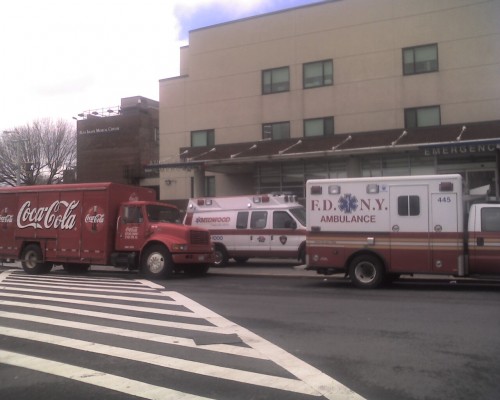Japanese health authorities have found levels of radioactive iodine and cesium in spinach, milk, and water. They detected levels of iodine-131 up to seven times higher than safety limits in spinach collected from six farms as far as 75 miles from the reactors.
How serious a problem is this? From a strictly scientific viewpoint, probably not much. But note the “probably.” From the standpoint of the public, the problem is very serious indeed.
What’s happening with the Japanese food supply gets us into the classic contradictions of risk communication. Consider this response:
After the announcements, Japanese officials immediately tried to calm an already-jittery public, saying the amounts detected were so small that people would have to consume unimaginable amounts to endanger their health. “Can you imagine eating one kilogram of spinach every day for one year?” said State Secretary of Health Minister Yoko Komiyama. One kilogram is a little over two pounds.
Edano [chief cabinet secretary] said someone drinking the tainted milk for one year would consume as much radiation as in a CT scan; for the spinach, it would be one-fifth of a CT scan….Drinking one liter of water with the iodine at Thursday’s levels is the equivalent of receiving one-eighty-eighth of the radiation from a chest X-ray.
Is the Japanese public likely to be reassured by these statements? They remind me of the British minister who went on TV and fed a hamburger to his small daughter during the mad cow crisis of the early 1990s. It didn’t work.
We are talking about food here. Something that people put in their bodies and those of their children.
Specialists in risk communication would view radioactive spinach as a problem ranking high on anyone’s “dread-and-outrage” scale.
Radioactivity is not visible, is not under personal control, and is technological, unfamiliar, and foreign. This makes something like this really, really scary, as I explain in the introduction my book Safe Food: The Politics of Food Safety.
So the statements of American experts don’t help much either:
“The most troubling thing to me is the fear that’s out of proportion to the risk,” said Dr. Henry Duval Royal, a radiologist at Washington University Medical School.
Yes it is. Understandably so. And Japanese officials will have a hard time dealing with it unless they are thoroughly forthcoming with information, earn the trust of the public, and take the fears seriously.
Update, March 21: The New York Times account on this issue from March 20. The March 21 story describes the spread of the radioactive materials:
Spinach from a farm in Hitachi, about 45 miles from the plant, contained 27 times the amount of iodine that is generally considered safe, while cesium levels were about four times higher than is deemed safe by Japan. Meanwhile, raw milk from a dairy farm in Iitate, about 18 miles from the plant, contained iodine levels that were 17 times higher than those considered safe, and milk had cesium levels that were slightly above amounts considered safe.


